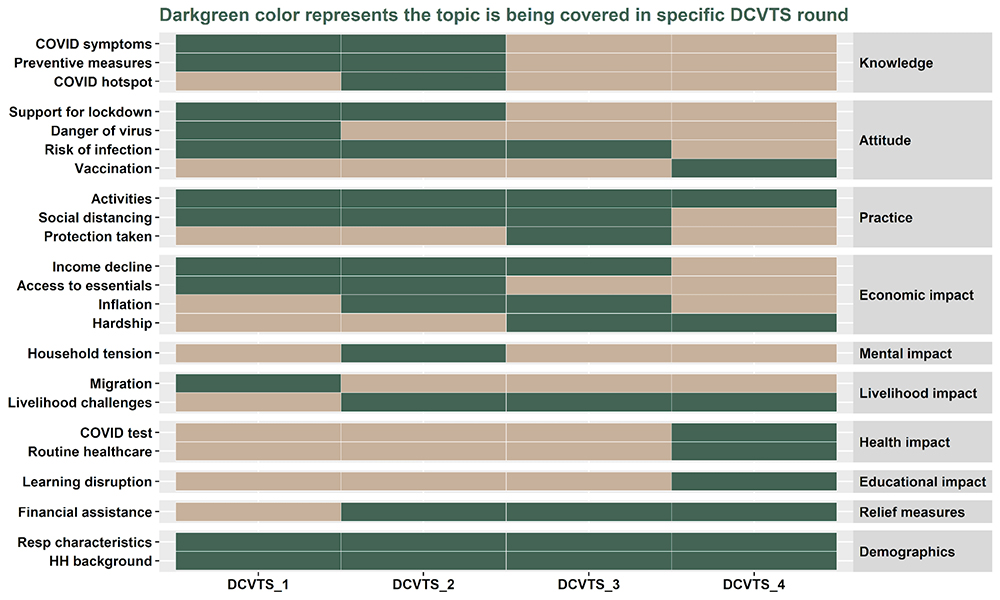In a dynamic research and policy environment with a growing demand for data, it is crucial to invest in methods of data collection leading to timely, high-quality and policy-relevant data. Delhi Metropolitan Area Study (DMAS), a flagship study of NCAER National Data Innovation Centre, serves as an incubator to experiment with innovations in data collection across various substantive domains such as household income, expenditure, borrowing; labor force participation; financial inclusion; health insurance and healthcare expenditure; education; gender equality and empowerment, among others. Two key objectives of DMAS are: 1) Conducting methodological experiments in data collection involving technological innovations and innovations in questionnaire designing; and 2) Demonstrating the feasibility and usefulness of remote monitoring of data collection activities to improve data quality.
Data collection for DMAS continued from 15th February, 2019 to 14th November, 2021, with a break of one and half-year during the COVID-19 pandemic. During this time, we completed DMAS baseline survey, 3 quarterly surveys, 30 rounds of monthly telephone surveys on employment, and finally the endline. Our inability to complete the 4th quarterly survey and the endline on time (which was supposed to happen during March-May 2020) has implications on our planned experiments because of comparability issues around reference period across the two experimental groups (one group of households receiving 4 quarterly surveys and the other group getting the annual reference period endline). So we will not be able to achieve some of the original objectives we had, as one can imagine, the last round of data collection is crucial for any evaluation study. However, DMAS endline has immense potential to capture the medium to long term economic, health and educational impact of the pandemic.
Study Design and Survey Methodology:
The target geographical area for DMAS is the Delhi National Capital Region (NCR) which comprises 31 districts spread over four states, viz., Haryana (13 districts), Delhi (9 districts), Rajasthan (2 districts), and Uttar Pradesh (7 districts) . Although it may not be apparent from the name, Delhi NCR is a highly diverse region including the metropolitan areas of Delhi as well as rural areas of districts in Haryana, Rajasthan, and Uttar Pradesh. Within a state, we considered a multi-stage stratified cluster sampling design. Districts, clusters, and households were selected at the first, second, and third stages of sampling. Clusters or the secondary sampling units (SSUs) were defined as census villages in rural areas and NSS Urban Frame Survey (UFS) blocks in urban areas. The goal of the sampling design was to select representative random sample at each stages of selection.
Total number of households that completed DMAS baseline survey was 5,253. We considered equal allocation of sample across districts resulting in approximately 22 SSUs per district, with a few exceptions. Within a district, SSUs were allocated to urban (UFS blocks) and rural areas (villages) in proportion to the percentage of urban and rural households in the district. The median number of households surveyed from a SSU was 20. Equal number of households were considered from each SSU in order to manage the interviewer workload efficiently.











